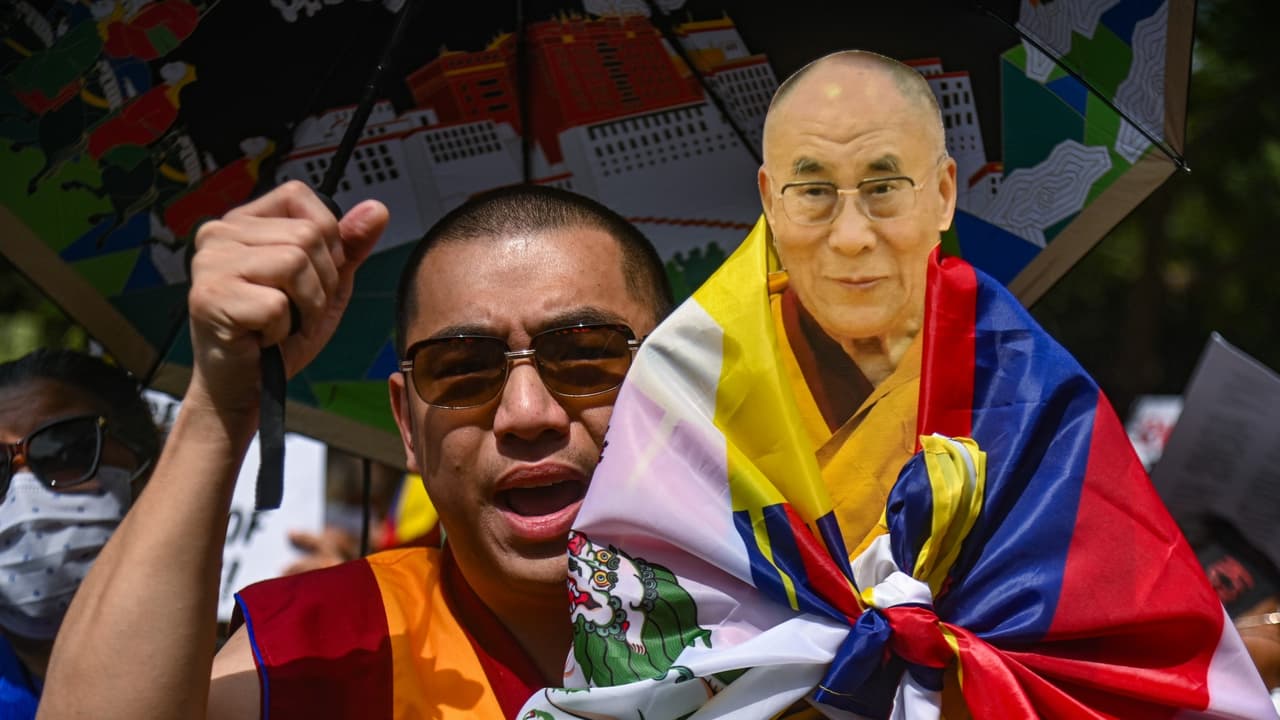On October 7, 1950, China invaded Tibet, ending its autonomy. Tibetan forces were crushed, leading to religious suppression, mass unrest, and the Dalai Lama’s exile, sparking decades of resistance.
New Delhi: There are some events in the Asian history which have had as profound and enduring an impact as the Chinese military invasion of Tibet on October 7, 1950. The day, for the Chinese Communist Party, marked the beginning of China’s control over Tibet, further leading to its incorporation into the People’s Republic of China.
For Tibetans, it marked the beginning of a painful era which have had significant impacts on their culture, religion, and governance, particularly concerning the various Tibetan Buddhist schools and lineages that have historically flourished in the region.
This date symbolized far more than a military maneuver. The world witnessed the loss of Tibetan autonomy, the beginning of widespread human rights violations, and the emergence of a struggle for identity. It continues to shape Tibetan life, both within the country and abroad.
Tibet Before the PLA: Autonomous Yet Unrecognized
Tibet had independent function after the collapse of the Qing Dynasty in 1912 and before the China’s entry into the country. However, it lacked formal recognition as a sovereign state but it used to maintain its own government, military and spiritual leadership under the Dalai Lama.
The Tibet’s political system was intertwined with Tibetan Buddhism, and the monastic institutions played a central role in society.
Tibet was declared an inseparable of China following the Chinese Communist Party helming the governance affairs in 1949.
On 7 October 1950, the People’s Liberation Army (PLA) crossed into the eastern region of Kham to fight against the Tibetan army, who were poorly equipped militias. The PLA crushed like anything, paving the way for political pressure on the Tibetan leadership.
The Seventeen Point Agreement and Loss of Autonomy
Under duress and without the Dalai Lama’s presence, in May 1951, Tibetan officials had to sign the Seventeen Point Agreement, a document meant to respect Tibetan autonomy and religious freedom while placing Tibet under Chinese sovereignty.
But, soon after, Beijing started asserting control over Tibetan religious institutions, dissolving traditional governance and implanting the administrative and ideological frameworks of the Chinese Communist Party.
As Chinese influence expanded, Tibetan society was subjected to a sweeping transformation. Monastic authority and spiritual leaders were stripped of power.
Land reform campaigns disrupted traditional ownership structures, targeting aristocrats and monasteries in violent purges. Tibetan Buddhism, once the heart of the culture, became the target of ideological suppression.
The 1959 Lhasa Uprising and the Dalai Lama’s Escape
An unrest erupted in 1959 at Lhasa, wherein tens of thousands of Tibetans rose up in protest against Chinese rule, fearing for the life and future of the Dalai Lama. Thousands of them were killed, and the Dalai Lama had to escape to India, where he remains in exile.
After then, China intensified its grip on the region by mass arrests, executions and the destruction of monasteries. In a matter of years, centuries of religious heritage were obliterated.
After the uprising, the Chinese government launched a number of campaigns with an intent to integrate or assimilate Tibet completely into the People’s Republic of China.
Large-scale infrastructure projects, such as highways, railways, and airports, were implemented, improving access while also enabling military control and surveillance.
These developments came hand-in-hand with state-led migration of Han Chinese settlers into Tibet, dramatically altering the region’s demographics and contributing to the cultural marginalization of Tibetans in their own homeland.
Despite the claims of modernisation and economic development, many Tibetans believe that the changes have disproportionately benefited Han settlers and state interests, while undermining Tibetan society.
Education, Indoctrination, and Cultural Erosion
To promote Mandarin and Communist ideology, the Tibetan language and education have been marginalized. Tibetan children are often sent to state-run boarding schools far from their families, where their language, religion, and cultural identity are systematically eroded.
As per the reports from human rights organizations, the Tibetans were subjected arbitrary arrests, forced re-education, torture, surveillance and tight restrictions on religious practices. Further, the monks and nuns were either jailed or expelled from monasteries.
Chinese used surveillance technologies, including facial recognition, online monitoring, and informant networks to stifle dissent and control daily life.
The Global Response and Controversy
Globally, the Tibetan issue is a deeply divisive and politically sensitive topic as the Chinese government maintains that Tibet has always been its part while a number scholars, rights groups and foreign governments view it as illegal occupation which violates international law and the right to self-determination.
For long, the Dalai Lama vouched for a meaningful autonomy within China rather than outright independence, but Beijing rejected the proposal out rightly.
Standing as an international symbol of the struggle between state power and cultural survival, Tibet’s fate continues to challenge the global community’s commitment to human rights, sovereignty, and the dignity of all peoples.
The legacy of the invasion is far from over; it remains a powerful reminder of the costs of silence, and the enduring strength of a people who refuse to forget who they are.
